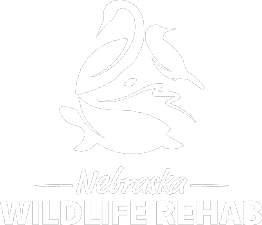Baby Foxes, Coyotes & Bobcats
If a baby animal is injured, it will need our help. Click here for instructions on how to get it to NWRI.
If a baby fox, coyote, or bobcat is wandering around alone, without a mother in sight, or if it is laying by itself in the open, particularly if it is weak and easy to catch, it will need our help.
If a baby fox, coyote, or bobcat is with its mother and she is uninjured, please leave it alone.
Adult Foxes, Coyotes & Bobcats
Any adult fox, coyote or bocat that is obviously injured or ill needs to be rescued. You can tell one is injured or ill if it is:
- Missing its hair
- Bleeding
- Cold and still
- Covered in flies and/or maggots
- Easily captured by hands
- Has open wounds or a fractured limb
- Cannot use one or more of its legs
These animals can be very dangerous and move very quickly, even when injured, so we do not recommend trying to pick them up yourself unless you can do it safely. Contact NWRI for assistance in rescuing adult large carnivores.
Mange in Coyotes & Foxes
Sarcoptic mange is a common affliction in coyotes and foxes, and commonly occurs when they are immune –compromised for some other reason (starvation, illness, injury, etc.). It is characterized by hair loss and constant scratching. Minor cases of mange can be treated in the wild by dropping medicated bait. Severe cases of mange and cases of mange that are accompanied by other injuries or illness, will need to be treated in captivity. Please contact us for further information on treating mange.

